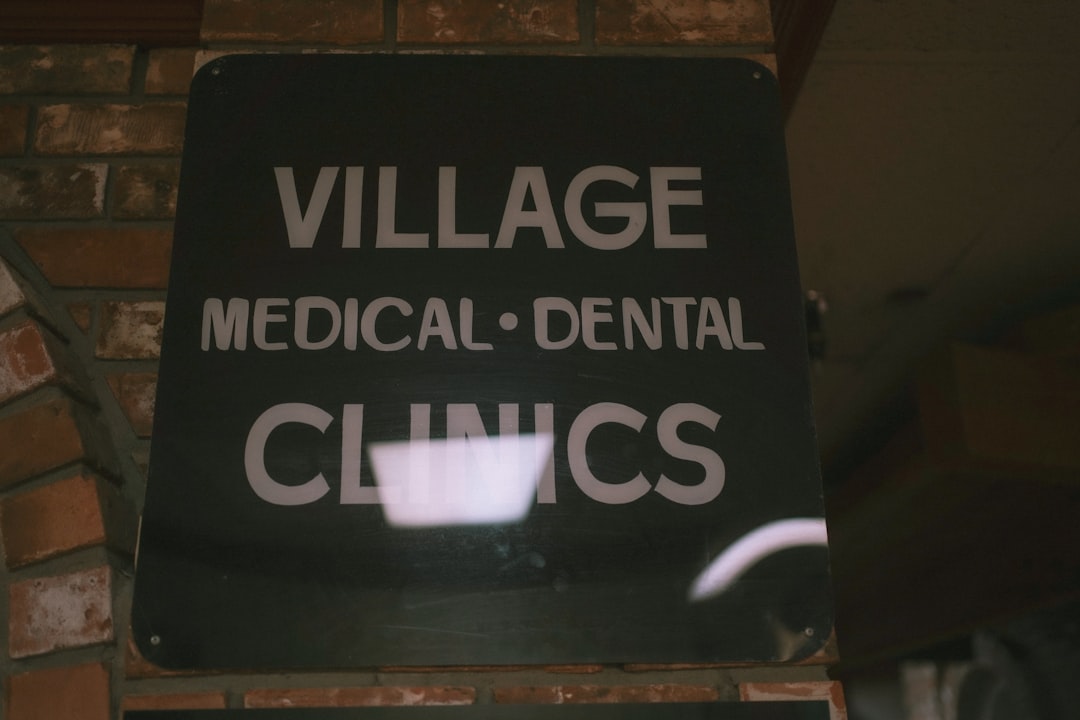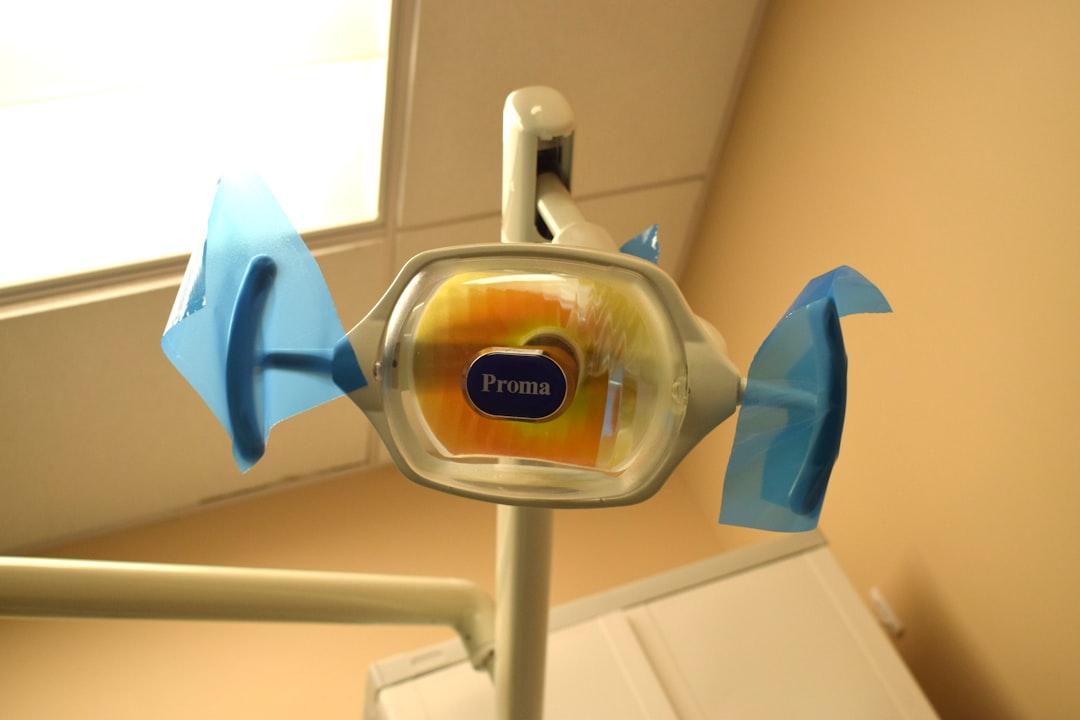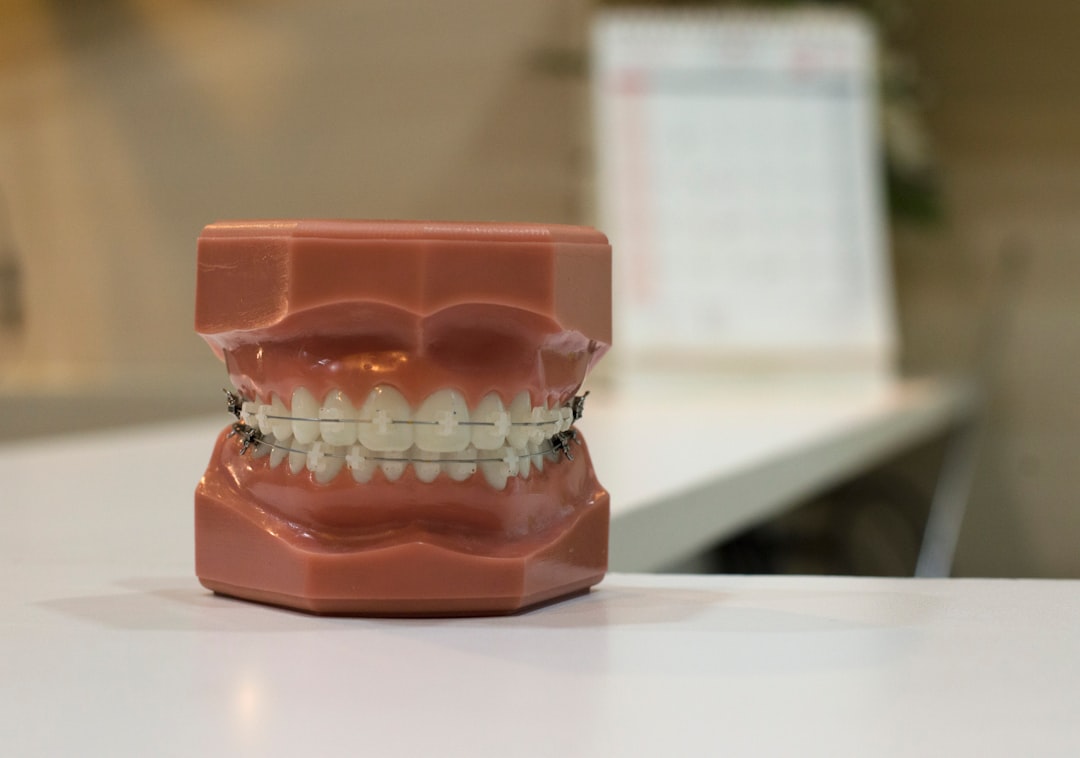

Engage prospects with a scan and streamline customer engagement with FREE QR code marketing tools by Sona – no strings attached!
Create a Free QR CodeFree consultation

No commitment

Engage prospects with a scan and streamline customer engagement with FREE QR code marketing tools by Sona – no strings attached!
Create a Free QR CodeFree consultation

No commitment
In today’s digitally driven dental landscape, many dental marketing agencies face mounting pressure to deliver not only more leads for practices, but also higher value patient conversions. Traditional print marketing such as appointment cards, flyers, and local event booths remains prevalent, yet there is a persistent disconnect: patients often show interest offline but never book an appointment, leaving practices with missed opportunities and hard to track results. The core frustration for agencies lies in measuring and improving the flow from initial offline engagement to real, trackable patient actions online.
Modern technology provides a bridge for these gaps. QR codes, in particular, transform formerly passive campaign touchpoints including printed ads, visit reminder cards, or community outreach into active digital conduits. With a simple scan, agencies empower every patient to transition seamlessly from encountering a message in the real world to engaging with digital appointment systems, review platforms, or tailored landing pages. This both reduces friction across the patient journey and offers granular, actionable data that traditional tactics lack.
For dental marketing agencies, integrating QR code marketing means more than providing a digital convenience; it is about reclaiming lost opportunities, optimizing campaign spend, and proving true marketing ROI. This guide explores how agencies can harness the potential of QR codes to overcome legacy frustrations, nurture patients from first exposure to loyal return visits, and demonstrate direct value to dentists through measurable growth and improved offline attribution.

Many dental marketing agencies struggle with prospective patients slipping through the cracks when offline interest is not tracked or converted efficiently. Appointment cards get tucked into wallets, local event flyers spark curiosity that never becomes a click, and paper forms delay response times until intent fades. QR codes offer a direct remedy by making each touchpoint traceable and actionable, delivering patients to the next best step with a single scan.
Replacing outdated analog processes is central to this transformation. Paper intake packets become mobile forms. Phone only scheduling becomes an online booking flow preloaded with the correct provider and offer. Manual review requests become tap and send prompts that capture feedback while the experience is fresh. The result is a consistent, low friction bridge from physical materials to measurable digital outcomes.
Sona QR supports the entire journey: agencies generate dynamic codes, centralize data capture, sync engagements to CRMs like HubSpot or Salesforce, and trigger retargeting across Meta and Google. That way, no scan is wasted and every patient with intent can be guided toward a booked appointment.
Start with a single, tightly scoped objective that aligns with practice goals. For example, increase new patient bookings from targeted direct mail, drive reviews within 48 hours of a visit, or accelerate Invisalign consult requests from in office signage. A clear goal focuses both creative and analytics, so everyone measures success the same way.
Translate that objective into a concrete offline touchpoint. If you want more new patient appointments, choose the one or two printed assets most likely to reach first time patients: new mover postcards or community event flyers. For reviews, focus on post visit receipts or checkout displays. By narrowing the field, you can test quickly and prove ROI before scaling across the practice.
Consider what you need the code to do and how you plan to optimize it over time. Static codes work for fixed destinations such as a general services page or PDF brochure. Dynamic codes are ideal for campaigns where you want to edit the destination, measure performance in real time, personalize content by audience segment, and enable retargeting.
For most agency run initiatives, dynamic codes are recommended. They let you A/B test landing pages, rotate offers without reprinting, and unify scan data across media. With Sona QR, you can create dynamic codes that append UTM parameters at the moment of scan, pass source data into hidden form fields, and send events to your analytics and CRM stack.
Design affects scannability and conversion. Patients scan when the code is visible, the purpose is obvious, and the promise is valuable. Use high contrast framing around the code, include a clear instruction, and make the code large enough for the viewing distance. A QR on a waiting room TV must be larger than one on a postcard. Add your logo or brand colors to build trust, but do not compromise contrast or quiet zone requirements.
Before printing, test in real conditions. Check different phones, operating systems, camera defaults, and lighting. Place sample codes at expected distances: on a wall poster, at a front desk, on a mailer held at arm’s length. Verify that the scan resolves instantly, the landing page loads fast on mobile, and the CTA is obvious. Slow pages and vague offers kill conversions, even with perfect scans.
Match QR code placements to the patient journey. For acquisition, deploy on direct mail, community event materials, and local ads near the practice. For conversion and upsell, focus on in office signage, chairside handouts, and treatment plan covers. For retention, use appointment cards, aftercare instructions, and loyalty programs. Each placement should answer the patient’s next logical question and point to the shortest path to action.
Roll out in phases. Launch in two or three channels, collect baseline data for two to four weeks, then scale to additional placements that mirror what is working. Use unique dynamic codes for each asset so you can see which creative, location, and call to action are driving the highest scan to action rates.
Analytics are the payoff. Set up dashboards to monitor scans by asset, location, device, and time of day. Map each scan to downstream actions such as form submissions, booked appointments, reviews posted, and accepted treatment plans. When you spot high scan but low conversion assets, diagnose the landing experience and call to action. When you find high performers, double down on those placements and messages.
Centralized platforms like Sona QR provide a single source of truth for scan events and connect those events to CRM records, email sequences, and ad audiences. That lets your team test offers, rotate landing pages, run A/B comparisons across codes, and trigger automated follow ups. Optimization is not a one time task; it is a weekly habit that compounds results and reduces wasted spend.

Dental agencies often find that the journey from physical marketing asset to online action is filled with blind spots. Appointment cards gather dust, mailers spark curiosity without clicks, and event leads disappear after the handshake. The common thread is invisibility: without a fast, measurable way to capture interest, it is difficult to guide prospects to conversion or prove which tactics work. See how practices address this in dental QR marketing.
QR codes address this gap with instant engagement and robust analytics. A scan requires no app download and no long URL typing. The patient simply points a camera and lands on the exact resource intended for that moment. For agencies, every scan becomes a data point with a source, timestamp, and device type, which means every print asset can be evaluated and optimized like a digital ad. The result is a connected patient journey and a clear line from offline spend to online outcomes. Adoption insights and examples are covered in this dental practice guide.
Real world adoption shows QR codes added to appointment reminders boost digital bookings, while QR driven review prompts at checkout capture feedback that might otherwise be forgotten. Placed well, they stitch fragmented patient journeys into a measurable, repeatable funnel. Explore the benefits of QR codes in dental campaigns.

Dental patients engage with practices for many reasons: routine cleanings, urgent pain, cosmetic treatments, financing questions, and follow up care. Each of these moments calls for a different digital action. Selecting the right QR format ensures that a scan does not just lead somewhere, it leads to the right destination for the patient’s intent.
Dynamic, campaign managed QR codes magnify this benefit. Agencies can direct new patient mailers to a prefilled new patient form, chairside posters to a review portal, and treatment plan covers to a financing application, all while collecting consistent analytics. When goals change, destinations change instantly without reprinting a single asset.
With Sona QR, agencies can create all of these formats from one dashboard, attach custom UTMs per campaign, and analyze which formats drive the strongest downstream actions like bookings and reviews. Explore the broader use case library for inspiration.

The biggest opportunity often hides in plain sight: the printed materials practices already use every day. Appointment reminders, office signage, procedure brochures, and treatment plan folders reach the right audience but rarely lead to measurable action. By adding QR codes with clear calls to action, agencies convert these passive touchpoints into acquisition, conversion, and retention levers.
Another underleveraged area is community presence. Health fairs, school sponsorships, and local events produce a wave of short lived interest. Without a simple way to capture that interest on the spot, it vanishes. QR codes funnel it into the CRM along with context like location, time, and topic, which makes follow up personalized and effective.
By instrumenting physical assets with QR codes, agencies learn which messages resonate, where intent shows up, and how to recover prospects that would otherwise slip away.
Persistent challenges like untracked new patient interest, uncollected reviews, and untargeted promotions limit an agency’s ability to demonstrate value. QR codes embed measurement and action into everyday interactions, turning those challenges into systematic wins.
Embedding QR codes across these scenarios creates feedback loops. Agencies see which sources produce qualified leads, which offers convert, and which practices need front desk coaching to promote scanning. That transparency leads to better strategy and stronger client relationships.
Every scan signal can improve your audience strategy. Even if a patient does not book immediately, the scan reveals interest in a service, awareness of an offer, or engagement with a practice location. Capturing and tagging these signals lets you personalize follow up and reach patients with the right message at the right time.
Segmentation begins with mapping the journey. Awareness, consideration, and conversion moments happen across print, events, and in office experiences. Assign unique dynamic codes to each stage so your CRM can build behavior based audiences automatically. Then, use those audiences to trigger nurture emails, SMS reminders, and paid retargeting with Sona’s Playbook Intent-Driven Retargeting.
For dental practices, useful distinctions include new mover families versus current patients, hygiene only patients versus cosmetic interest, insured versus self pay, and urgent care versus elective treatment. With those segments in place, agencies deliver relevant follow ups that feel helpful instead of generic.
QR codes connect the dots across a modern marketing stack. Print, in office experiences, social content, and events all become entry points to the same digital engine where audiences are segmented, nurtured, and converted. When every scan feeds your analytics and CRM, you gain a unified view of patient journeys and the levers that drive revenue.
Integration is also about timing. A direct mail code might trigger a landing page experience today, then drive a remarketing ad later to nudge a consult. An in office scan might launch a review request immediately and a referral prompt a week later. With Sona QR, agencies manage codes centrally, monitor performance across channels, and sync scan activity with email, SMS, and ad platforms to keep momentum alive.
QR codes serve as the offline onramp to your digital marketing engine. With a centralized platform like Sona QR, agencies orchestrate the full funnel: code management, performance monitoring, and real time syncs to CRM and ad platforms.
Many dental agencies falter when QR codes are an afterthought instead of a strategic asset. Unplanned implementation risks poor adoption, little to no measurement, and weak CRM connectivity. To ensure each scan becomes a growth opportunity, use this checklist as your campaign playbook. Start small, measure meticulously, and scale only what works across practices and locations.
Focus on conversion quality, not just scan volume. A high scan count with low bookings signals issues with messaging, landing speed, or scheduling friction. A modest scan count with high booking rates signals a strong offer and placement. Your goal is predictable, repeatable results that compound across assets and months.
Clarify the business outcome before touching creative. Align the QR code’s purpose with one conversion event so you can attribute success unambiguously. For dental practices, the most common outcomes include increasing new patient bookings, collecting more reviews, and filling last minute hygiene openings.
Decide whether you need a static or dynamic code. Most performance campaigns benefit from dynamic codes because they allow destination edits, A/B tests, and detailed analytics without reprinting.
Apply best practices for scannability and conversion. Design for the viewing distance and lighting conditions of the placement. Always pair the code with a benefit driven CTA that sets expectations.
Start where impact is likely to be highest, then expand. Match placements to the patient flow and context of use. For example, place review prompts at checkout when a positive experience is top of mind, and place booking prompts on appointment cards when patients need convenience.
Instrument your campaign with analytics from day one. Tie scan activity to downstream actions in your CRM, then iterate based on what you learn.

Attribution is often the missing link between offline engagement and revenue. Without it, agencies struggle to justify spend or know where to optimize. Modern QR platforms change this by capturing granular scan data and connecting it to downstream outcomes in your analytics and CRM. When scans map to bookings, visits, and accepted treatment plans, you gain a true performance view. For perspective on measurement fundamentals, see accurate revenue attribution and multi-touch attribution.
Building this measurement fabric requires both technology and process. Each code should carry campaign parameters, route to a mobile optimized destination, and trigger events on scan and conversion. Your CRM should store scan sources and update lead or patient records accordingly. Over time, patterns emerge: which neighborhoods respond to which offers, which placements drive high intent, and which messages lift show rates and case acceptance.
Sona QR centralizes scan data while Sona, an AI-powered marketing platform for identity resolution, data activation, and revenue attribution, adds identity resolution and multi touch attribution. Together, they unify fragmented touchpoints across buying stages, link QR scans with website visits and ad clicks, and show how each interaction contributes to pipeline and closed revenue. For dental agencies, that clarity turns QR codes from a convenience into a core performance channel.
Sustained results come from operationalizing QR codes, not just experimenting with them. Agencies that standardize codes per asset, enrich destinations with UTMs, and automate follow up build a compounding advantage. They learn faster, optimize smarter, and prove value more convincingly to practices that want results they can see.
Training matters too. Front office staff are your on site promoters. A brief script and a clear benefit doubles scan rates. When teams know how to introduce the QR experience and why it helps patients, every placement becomes more effective.
Creative deployments that perform well for dental practices include QR codes on aftercare instructions that link to short recovery videos, and loyalty style punch cards with a code that tracks cleanings and unlocks whitening discounts. These placements do double duty: they help patients immediately and they create valuable behavioral data for your CRM.
Dental agencies striving for standout results know that measuring and optimizing every marketing touchpoint is essential, yet often elusive. QR codes serve as the connective tissue, enabling genuine end to end visibility from offline interest to digital engagement and, ultimately, booked and returning patients. Implemented well, they convert every printed or physical asset into a performance channel with actionable insights. That clarity supports smarter spend, better patient experiences, and higher ROI for practices that demand accountability.
The practical path is straightforward. Pick a high leverage use case, deploy dynamic QR codes with strong CTAs, route to fast mobile experiences, and connect scans to your CRM. Iterate weekly based on real behavior until conversion rates become predictable. With Sona QR and Sona.com powering creation, analytics, and attribution, agencies can capture demand at the source and connect every scan to revenue. In a competitive landscape where proving impact is the difference between churn and growth, QR codes give dental marketing agencies a measurable, repeatable way to turn offline moments into lasting patient relationships. Start creating QR codes for free.
QR codes have revolutionized dental marketing agencies by turning traditional outreach into actionable, measurable growth opportunities. From attracting new patients to enhancing appointment booking experiences and educating clients, QR codes streamline engagement and deliver valuable data that transforms every marketing touchpoint into a powerful conversion driver. Imagine knowing exactly which brochures or ads bring patients through your doors—and optimizing campaigns instantly to maximize impact.
With Sona QR, dental marketing agencies gain access to dynamic, trackable QR codes that can be updated in real time without costly reprints. This means you can seamlessly connect every scan to patient acquisition metrics and revenue growth, ensuring no opportunity slips through the cracks. Start for free with Sona QR today and watch as every scan becomes a direct path to new patient relationships and measurable business success.
Dental marketing agencies help grow your practice by using digital tools like QR codes to convert offline patient interest into measurable online actions, optimize marketing spend, and track patient journeys from first contact to appointment booking and reviews.
Best practices include choosing a clear use case aligned with practice goals, using dynamic QR codes for flexibility and tracking, designing codes with prominent calls to action and high contrast, deploying codes across high impact channels matched to patient journeys, and continuously tracking and optimizing performance.
You can measure success by tracking key performance indicators such as scan volume, scan to booking rate, scan to review rate, and revenue influenced using centralized platforms that integrate scan data with your CRM and analytics tools to map offline engagement to online conversions.
The latest trends include integrating QR codes to bridge offline and online patient engagement, using dynamic codes for real-time content updates and personalization, leveraging detailed analytics for attribution, and employing automated follow-up workflows to nurture patient intent and improve conversion rates.
Improve patient engagement by embedding QR codes on printed materials and in-office signage to provide instant access to booking, reviews, special offers, and educational content, pairing codes with clear calls to action, and using CRM integration to deliver personalized follow-ups and retargeting.
Use Sona QR's trackable codes to improve customer acquisition and engagement today.
Create Your FREE Trackable QR Code in SecondsJoin results-focused teams combining Sona Platform automation with advanced Google Ads strategies to scale lead generation

Connect your existing CRM

Free Account Enrichment

No setup fees
No commitment required

Free consultation

Get a custom Google Ads roadmap for your business






Launch campaigns that generate qualified leads in 30 days or less.
